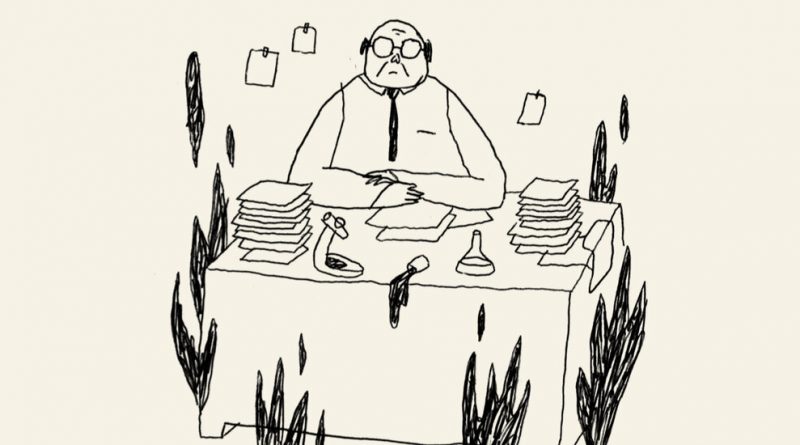Covid Proved the C.D.C. Is Broken. Can It Be Fixed?
[ad_1]
MacCannell says he did everything he could think of to get a handle on the crisis: He and his team devised protocols to help public-health labs start new sequencing programs; developed plans for partnering with commercial labs, which have much greater capacity overall; and set up a consortium of scientists across the country to collaborate and pool resources. But those efforts were mere stopgaps, he acknowledges, and in any case the approval and funding needed to get them off the ground was delayed for many months. “There was a big gap between what we expected to happen and what we actually saw unfold,” MacCannell says. “Not only at the federal level, but at every step down from there.”
Genomic surveillance is one of many shortcomings plaguing the disease-surveillance system over which the C.D.C. presides. Those shortcomings have been invisible to anyone not working in the field, because at first blush the system makes sense. Public-health emergencies that are identified at the local level are reported up to state health departments and then, when necessary, passed on to the C.D.C., where officials analyze the information, issue guidelines and coordinate federal response efforts. There’s a special system for the 120 or so “notifiable diseases” — like Lyme disease and hepatitis — which everyone agrees are serious enough to warrant immediate action, and another for “syndromic surveillance,” in which epidemiologists can search real-time emergency-room data for symptoms of concern. But beneath that broad structure, chaos often reigns.
As the coronavirus grew into a full-blown pandemic, C.D.C. scientists struggled to answer even basic questions about what the disease looked like or where or how it was spreading.
The system itself is deeply disjointed, and the technology that underpins it is less sophisticated than that found in many American households. State health departments are not connected to one another in any meaningful way, nor are hospitals, clinics, laboratories and local health agencies. The C.D.C. maintains more than 100 separate disease-specific computer systems (a byproduct of the agency’s funding silos), and many of those can’t interface with one another. Crucial data is often shepherded from health care facilities to health departments through a tortured process that can involve handwritten notes, manual spreadsheets, fax machines and snail mail. It’s not uncommon for basic information like race, ethnicity, age or address to be missing from clinical reports. It’s also not uncommon for those reports to languish at the state or local level without ever making their way to federal officials. Even the most serious diseases, which are supposed to be logged within 24 hours of detection and reported to the C.D.C. in a timely way, are not necessarily sent up that chain in any systematic manner. “It depends on the jurisdiction,” Janet Hamilton, executive director of the Council for State and Territorial Epidemiologists, told me recently. “Some regions have robust public health departments and good reporting records, and others don’t.”
Disease monitoring is also hampered by the uneven patchwork of surveillance programs across the country and the need to negotiate data sharing and other agreements separately with each state. Antibiotic resistance, respiratory infections and other pathogens are tracked robustly in some areas and very poorly or not at all in others (respiratory infections, for example, are more heavily monitored in the Four Corners region than in other places), in part because the agency does not have the ability, or authority, to get all the data it needs from every community. Hanage likens the entire apparatus to a Rube Goldberg machine. “There’s no central anything,” he says. “Random patchwork collaborations were initiated and transformed and now have an outsize impact on our understanding of public health. That’s not to criticize the people who made those things, because the alternative might have been nothing. But the result is something with no rational plan behind it.”
The gaps make it difficult to track even well-known diseases and nearly impossible to get a handle on new ones. During a recent E. coli outbreak involving romaine lettuce, officials were forced to base billion-dollar, life-or-death decisions about which products to pull from which shelves in which regions of the country on data that was being screen-shotted and text-messaged to epidemiologists and health officials. During the vaping injury (or Evali) outbreak in 2019, doctors faxed hundreds of pages of medical records, for some cases, directly to local health departments. Epidemiologists could barely process the data in that format, let alone parse it for clues. “There is no ready-made process for when something like vaping injury or Zika or SARS-CoV-2 pops up,” Hamilton says. “There are 64 separate public-health jurisdictions in this country, and each one will have its own ideas about what information to collect and how to share it.”
In 2020, as the coronavirus grew from a few isolated outbreaks into a full-blown pandemic, C.D.C. scientists struggled to answer even basic questions about what the disease itself looked like or where or how it was spreading. “We were being asked who is being hospitalized, who are the severe cases, what are the characteristics, and it was so frustrating,” Anne Schuchat, the agency’s deputy director, told a panel of colleagues last fall. “People were going out to manually review charts. I felt like, well, the health care sector has this data. It’s sitting in their system. Can we work with them?” The agency could not keep reliable track of testing or case rates across the country. It also struggled to update hospital data, which includes things like bed availability and ventilator supply; the Trump administration hired a private contractor to assemble that data, amid accusations of political favoritism. And when multiple vaccines were finally deployed, the agency was not able to monitor supplies or accurately keep tabs on waste.
